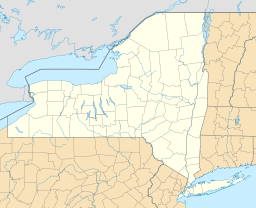Grass Pond (Thendara, New York) facts for kids
Quick facts for kids Grass Pond |
|
|---|---|
| Location | Herkimer County, New York |
| Coordinates | 43°41′33″N 75°03′41″W / 43.6924946°N 75.0613613°W |
| Type | Lake |
| Surface area | 23 acres (0.036 sq mi) |
| Surface elevation | 1,798 feet (548 m) |
| Settlements | Minnehaha |
Grass Pond is a small lake located in Herkimer County, New York. It sits north-northeast of a place called Minnehaha. This pond is a natural body of water, meaning it formed naturally over time, not built by people.
Grass Pond is an important part of the local environment. It helps to support many different kinds of plants and animals. The pond's water eventually flows into another nearby body of water, Cedar Pond.
Contents
Where is Grass Pond Located?
Grass Pond is found in the beautiful Adirondack Mountains region of New York State. This area is known for its many lakes, forests, and outdoor activities.
- The pond is in Herkimer County, which is in the central part of New York.
- It is specifically located north-northeast of the small community of Minnehaha.
- The elevation of Grass Pond is about 1,798 feet (548 meters) above sea level. This means it's quite high up in the mountains!
How Big is Grass Pond?
Grass Pond is considered a small lake or pond. Its size helps to create a unique habitat for wildlife.
- The pond covers an area of about 23 acres (0.036 square miles). To give you an idea, an acre is roughly the size of a football field. So, 23 acres is like 23 football fields!
- It's not a very deep pond, which means sunlight can reach more of its bottom. This allows many aquatic plants to grow.
- Water from Grass Pond flows southwest through a small, unnamed creek. This creek then empties into Cedar Pond. This connection is important for the local ecosystem.
What Lives in Grass Pond?
Small lakes like Grass Pond are home to a variety of plants and animals. They create a rich habitat where different species can thrive.
Aquatic Plants and Algae
The pond's shallow areas and clear water allow many types of plants to grow.
- Water Lilies: You might see beautiful water lilies floating on the surface. These plants provide shade and shelter for fish.
- Submerged Plants: Many plants grow completely underwater. They produce oxygen and offer food for aquatic insects and fish.
- Algae: Tiny plant-like organisms called algae also live in the pond. They are at the bottom of the food chain, feeding small creatures.
Fish and Other Aquatic Animals
Grass Pond is likely home to several species of fish and other creatures that live in or near the water.
- Fish: Common fish in small New York ponds might include largemouth bass, smallmouth bass, yellow perch, and sunfish. These fish eat insects, smaller fish, and plant matter.
- Insects: Many insects spend part of their lives in the water. Examples include dragonfly nymphs, mayfly larvae, and water beetles. These insects are a food source for fish and birds.
- Amphibians: Frogs and salamanders often live near ponds. They lay their eggs in the water and their young (tadpoles) grow there.
- Turtles: Different kinds of turtles might be found basking on logs or rocks near the pond's edge.
Birds and Mammals
Animals that live on land also visit Grass Pond for food and water.
- Birds: You might see ducks, geese, and herons fishing in the pond. Ospreys and bald eagles sometimes hunt fish from above.
- Mammals: Animals like beavers, muskrats, and otters are often found in and around ponds. They build homes and find food there. Deer and raccoons also visit the pond to drink water.
Why is Grass Pond Important?
Even though it's a small pond, Grass Pond plays a big role in the local environment.
- Biodiversity: It supports a wide variety of life, contributing to the overall health of the ecosystem.
- Water Quality: Ponds can help filter water and maintain the health of connected waterways like Cedar Pond.
- Recreation: Small ponds often provide opportunities for activities like fishing, kayaking, or wildlife watching. These activities help people connect with nature.
- Natural Beauty: Grass Pond adds to the natural beauty of the Adirondack region, making it a special place for both wildlife and people.
Protecting Grass Pond
It's important to protect natural areas like Grass Pond so they can continue to thrive.
- Clean Water: Keeping the water clean is vital. This means avoiding pollution from litter, chemicals, or other harmful substances.
- Habitat Preservation: Protecting the plants and trees around the pond helps prevent erosion and provides homes for animals.
- Responsible Recreation: If people visit the pond, they should follow rules like "leave no trace" to keep the area healthy.
By understanding and respecting places like Grass Pond, we can help ensure they remain beautiful and full of life for many years to come.


